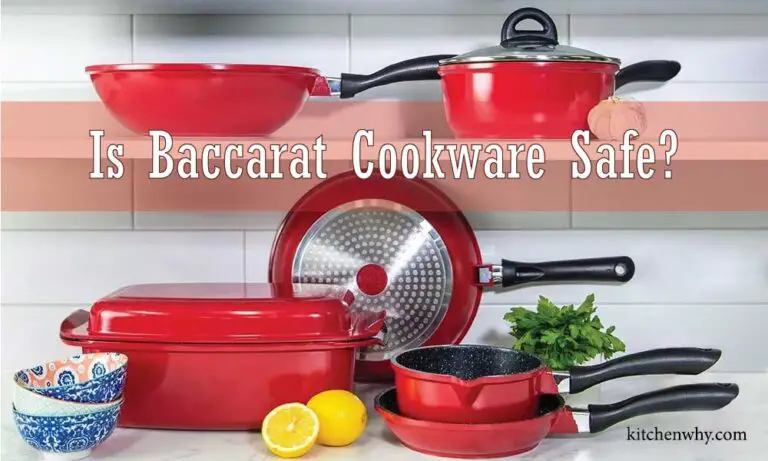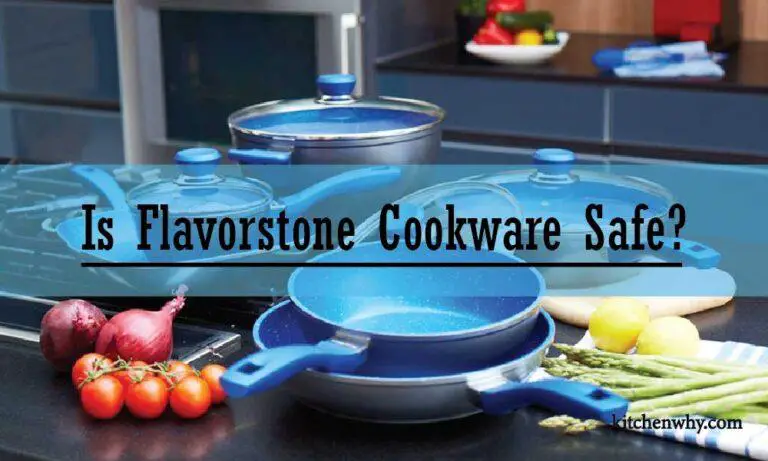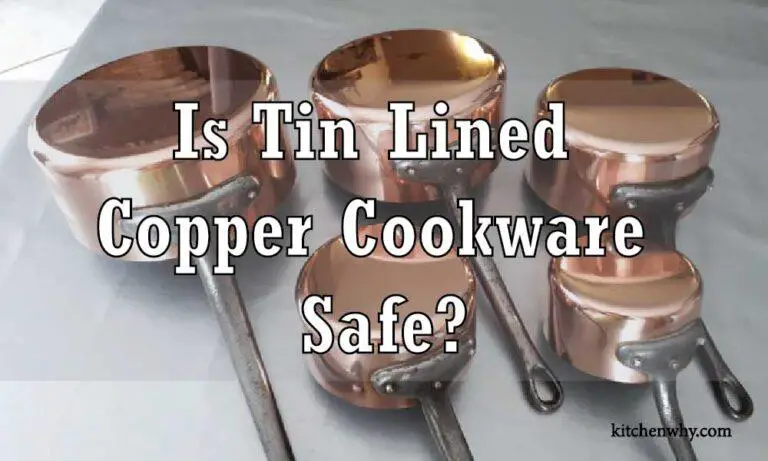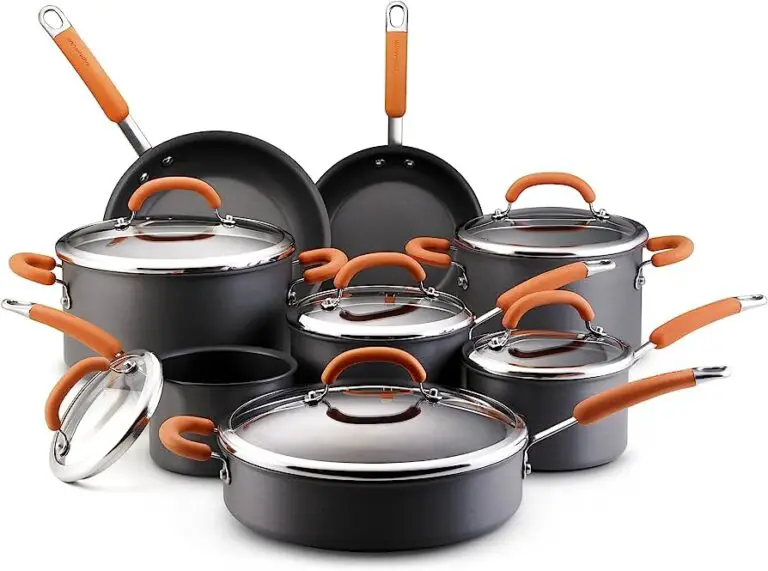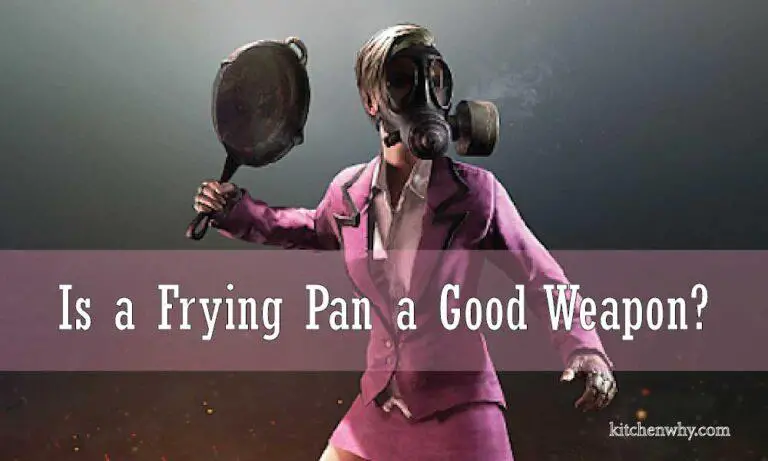Can Plastic Handle Pans Go in the Oven? Myths and Facts
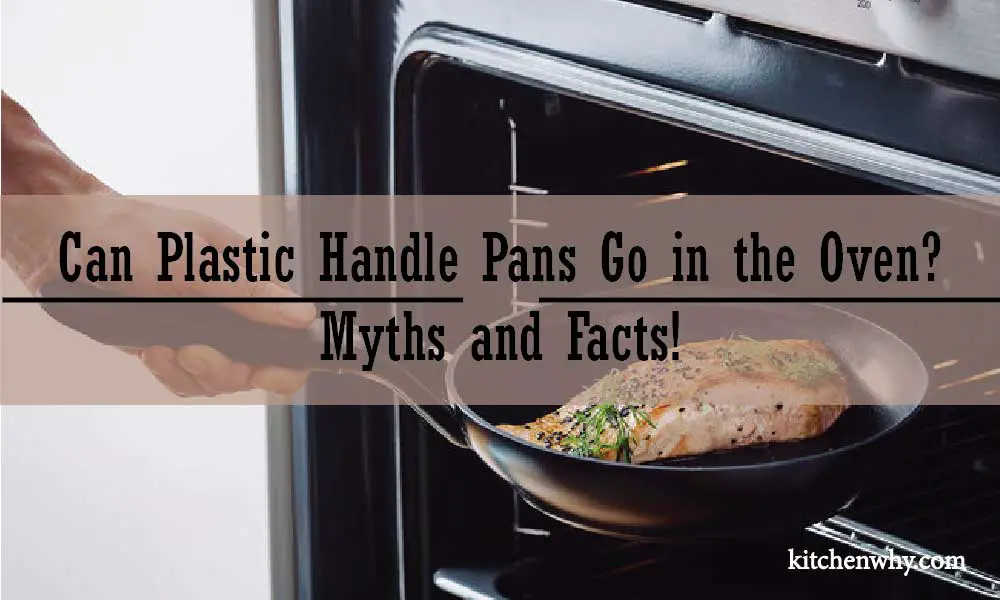
The oven is the safest way to cook food. The oven temperature controls the cooking time, and there’s less risk of contamination. Whether baking cookies, browning meat, or cooking a meal for a family-size dinner, ovens are ideal for all your cooking needs. You can use a different type of oven-safe skillet for cooking your food.
So, Can Plastic Handle Pans Go in the Oven? Plastic handle pans are generally not suitable for oven use due to the limitations of plastic in high-temperature environments. But Thermosetting plastic can be used in the oven as it has a certain level of heat resistance.
Related: Best Ovenproof Frying Pan
In this blog, we’ll talk about whether plastic handle pans can go in the oven, what myths surround them, and what facts you should be aware of before using them in your oven. There are different types of cookware, pans, and pots. Some came with plastic handles. The manufacturer uses high-quality food-grade plastics on them, reminding the excellent use and less contamination with food. But, some are more planned than they are meant to be. So, we get those myths and pertinent facts.
What are plastic handle pans?
A plastic handle pan is made from durable and heat-resistant plastic material. It can be used to cook anything that can be cooked in a regular pan, from stir-fries to casser-doors. Those pans can be made from cast iron, aluminum, stainless steel, etc. Depending on the demand, they can have a non-stick coating or marble coating.
A plastic handle pan is safe in the oven, microwave, and dishwasher, making it easy to keep clean and safe to use. The lifespan of a plastic handle pan is usually longer than that of a non-plastic pan. Plus, they are inexpensive and easy to use, making them an affordable option for consumers.
Can Plastic Handle Pans Go in the Oven?
In general, most pans with plastic handles are not designed to be oven-safe and should not be placed in the oven. Exposing plastic handles to high temperatures can cause them to melt, warp, or release harmful fumes.
But, Thermosetting plastic can be used in the oven as it has a certain level of heat resistance. Plastic handles can typically withstand temperatures up to 572°F for a short period, such as a few minutes.
However, if you plan to keep the pan in the oven for more than 15 minutes, it is not recommended as the long-term temperature limit for plastic is around 284°F. If you need to use a frying pan with a plastic handle in the oven for an extended period, it is advisable to set the oven temperature below 284°F to avoid damaging the plastic handle.
To determine whether a plastic handle pan can be used in the oven, it is crucial to refer to the manufacturer’s instructions, labels, or markings on the pan itself. These sources will provide accurate information regarding the pan’s oven safety and any temperature limitations. If there is no explicit indication of oven safety, it is advisable to assume that the pan is not suitable for oven use.
To ensure safety and avoid potential risks, it is generally recommended to use cookware specifically designed for oven use, such as pans with metal handles or pans made from materials like stainless steel or cast iron that can tolerate high temperatures.
If you need to use cookware in the oven, it is advisable to choose pans with metal handles or removable handles that are specifically designed for oven use. These pans are typically made from materials like stainless steel, cast iron, or certain types of non-stick coatings that can withstand high temperatures.
Always prioritize safety and follow the manufacturer’s instructions to ensure proper usage of your cookware and to minimize any potential risks in the kitchen.
Myths about plastic handle pans going in the oven.
Some myths are roaming around us about going into the oven of plastic handle pans. We tried to find them and give the facts and truths of those myths. You will be amazed to know them. Let’s begin:
- Myth: Plastic handle pans are not safe to use in the oven.
- Truth: Plastic handle pans can go in the oven like any other pan. They can withstand high temperatures without warping or becoming unsafe if handled properly.
- Myth: My plastic handle pan will warp when I put it in the oven.
- Truth: The weight of your pan and the oven’s temperature will determine how quickly the pan warps. A pan with a non-stick surface is the easiest to handle and should be used if possible. Otherwise, gently hand-handle the pan to ensure it doesn’t warp or become misshaped.
- Myth: The heat from the oven will melt the plastic on my pan.
- Truth: The non-stick surface of a plastic handle pan will deflect and dissipate any excess heat, prolonging its lifespan and protecting it from damage caused by high temperatures.
- Myth: I will have to wash my pan every time I use it in the oven.
- Truth: With careful handling, you can use a plastic handle pan multiple times without washing it between uses. After using a non-stick pan, wipe it with a damp cloth to clean off any residue, and then dry it thoroughly before using it again.
Facts About Plastic Handle Pan Going in The Oven.
Though there are some myths about plastic handle pans going in the oven, and we found their actual fact, we have some facts that every Kitchener should know. There are some restrictions and some awareness that you should know before putting your plastic handle pans into the oven.
- Some plastics may leach chemicals into food when placed in the oven. This can cause edible plastic to become harmful or unsafe to handle.
- Putting plastic handle pans in the oven may cause them to warp or crack.
- The heat from the oven may cause the plastic to melt, creating a hazardous mess.
- All plastic handle pans should be washed by hand before being placed in the oven.
- Also, handle pans made of non-safe materials such as cast iron should not be used in the oven either. These materials are too fragile and could get damaged easily by the high temperature of a traditional oven.
- Lastly, if you must use a plastic handle pan in the oven, it is best to use safe plastics like polycarbonate or silicone.
Final thoughts on whether or not plastic handle pans can go in the oven
It is safe to place plastic handle pans in the oven. Plastic handle pans do not release toxic fumes when placed in the oven and are safe to use as long-term cookware. You can use plastic handle pans with any type of oven, including gas and electric ones. So, they are oven-safe pans. They can withstand higher temperatures or be used in a hot oven at a safe temperature, even on a stovetop.
You can also wash plastic handle pans in the dishwasher, which makes them easy to clean and safe to use. It is best to dry plastic handle pans before storing them, preventing the handles from becoming brittle and broken. They usually come with a glass lid. It will be a good idea to wash them by hand and store them safely for subsequent use.
Is plastic handle pans safe to use in the oven?
Plastic Handle pans are the most controversial kitchen utensils that a Kitchener can have in his kitchen. People are so concerned about putting them into the oven or dishwasher. But the short answer is, Yes! It can be used in the oven. So, there are some myths and facts that we have found and shared with you.
- Myth: Plastic handle pans are not safe to use in the oven.
- Fact: Plastic handle pans can be used in the oven but should be pre-heated first. This will help prevent the handle from becoming hot and unsafe for the user.
- Myth: Only metal handle pans can be used in the oven.
- Fact: Metal and non-stick cookware can be used in the oven with plastic handle pans. Before using them, it is important to read the manufacturer’s instructions to ensure safe use.
- Myth: The plastic material used in plastic handle pans leaches into food and causes health problems.
- Fact: It is important to follow the manufacturer’s guidelines and not use plastic materials of non-stick cookware when cooking with metal utensils or pans. Also, always wash wooden or silicone handles appropriately to eliminate any potentially harmful chemicals from the cookware.
Is Plastic Handle Pans Greater Than Non-Plastic Handle Pans?
This is a difficult question to answer, as there are many factors that you need to consider when making this decision. Some of these include the material that the pan is made from (e.g., metal or non-metal), how durable it is, and whether or not it has plastic handles.
While there are some benefits to using plastic handle pans, such as being easier to clean, the jury is still out on whether they are more significant than non-plastic handle pans. While a UK personal finance site study found that plastic-handled pans were 55% less likely to stick and required 30% less cooking time than pans made from other materials, other studies have yet to confirm these findings. Ultimately it comes down to preference – if you find that plastic handles make your life more straightforward in terms of cleaning and cookware organization, then go for them!
In general, however, plastic handle pans may be better than non-plastic handle pans because they’re more versatile and easier to clean. They also tend to heat evenly and resist sticking due to wet ingredients or oils. On the downside, some people find them less aesthetically pleasing than traditional cookware with wooden handles.
Can I reuse plastic handle pans after they’ve been used in the oven?
Yes, you can reuse plastic handle pans after they have been used in the oven. Just be sure to wash them promptly with hot water and soap before using them again. While it’s generally safe to reuse plastic handle pans after they’ve been used in the oven, there are a few precautions that you should take.
First of all, make sure that the pan is completely dry before using it again.
Second, be careful not to scratch the pan’s surface with metal utensils when reheating or cooking food.
Finally, never place acidic ingredients such as vinegar or lemon juice into an ovenware pot that has previously held oil or other acidic substances. These chemicals could cause irreversible damage to the pan’s finish.
There are some myths about reusing plastic handle pans also. You can check it out.
- Myth: Reusing plastic handle pans in the oven can cause toxic fumes and chemicals to be released.
- Fact: Using plastic handle pans in the oven is safe and does not create any harmful fumes or chemicals.
- Myth: Reusing plastic handle pans in the oven will cause them to break.
- Fact: Plastic handle pans can be safely reused after being used in the oven.
- Myth: It is unsafe to reuse plastic handle pans after being used in the oven.
- Fact: Using a plastic handle pan in the oven is safe, but always use a metal-based pan for better results. You can also use a silicone pan to replace a metal pan in the oven. This will help you cook your food evenly and easily without worrying about sticking or burning it.
More myths about using plastic handle pans in the oven
Yes, you read it right! There are more myths about using plastic handle pans in the oven. But don’t worry about them. They are just myths, and they are not true.
- The pan’s handle makes a rough surface that will damage the oven’s temperature probe.
- Handle pans are not designed to be used in the oven and can cause a fire if they are.
- Handle pans are non-stick and can make your food stick to the pan.
- Pans with plastic handle heat more quickly and often create uneven cooking.
- They are not safe to use with cookware that is made of aluminum.
- They are not meant to be used on an oven top.
- They might also cause an electric shock if touched by someone who is not wearing rubber gloves.
Frequently Asked Questions:
What are the risks associated with using plastic handle pans in the oven?
There are many risks associated with using plastic handle pans in the oven, including heat distortion and electrical hazards. When placed on an oven rack, these pans can cause a rise in temperature that exceeds 600 degrees Fahrenheit. This is dangerous not only for the pan itself but also for the food that is being cooked inside it.
Additionally, when melted plastic touches metal or other conductive materials, it can create sparks that may ignite something else in the kitchen, such as wax paper or drapes. These fires are especially hazardous because they often spread quickly and require extensive efforts to put out.
The risk of injury from using plastic handle pans in the oven includes the risk of burns. If they get hot enough, they can start to cook your food inside of them. Additionally, the risk of injury from using a plastic handle pan in the oven includes the risk of electrocution. This is because if you cook food in a pan with metal edges and a plastic handle, those metal edges could become a conductor of electricity and start shocking you when you cook with them.
If you’re planning on cooking with plastic handle pans in your oven, be sure to use them cautiously and keep a close eye on what’s happening inside the baking chamber at all times.
What are the benefits of using plastic handle pans in the oven?
There are many benefits to using plastic handle pans in the oven, including reduced cleanup time and easier storage. Because they’re made from durable materials, these pans can last for years without needing replacements or repairs. In addition, plastic handle pans heat evenly and quickly, making them ideal for baking cookies or other quick foods. They’re a breeze to clean – all you need is hot water and some soap!
Besides this, plastic handle pans are nontoxic and BPA-free, making them a safe and healthy choice to cook with. They heat evenly and are easy to clean, meaning you’ll have fewer problems with food sticking to the pan or oven walls.
Additionally, plastic handle pans can withstand high temperatures, which is ideal when baking. They won’t warp or crumble under high temperatures like metal handle pans might.
Conclusion
There are many myths surrounding plastic handle pans in the oven. But the truth is, they’re safe to use as long as you follow some basic precautions. You can read more about their benefits and myths here. Besides, there are tons of reusable non-plastic handle pan alternatives that you can try.
However, Now I think you know the details about Can Plastic Handle Pans Go in the Oven?

